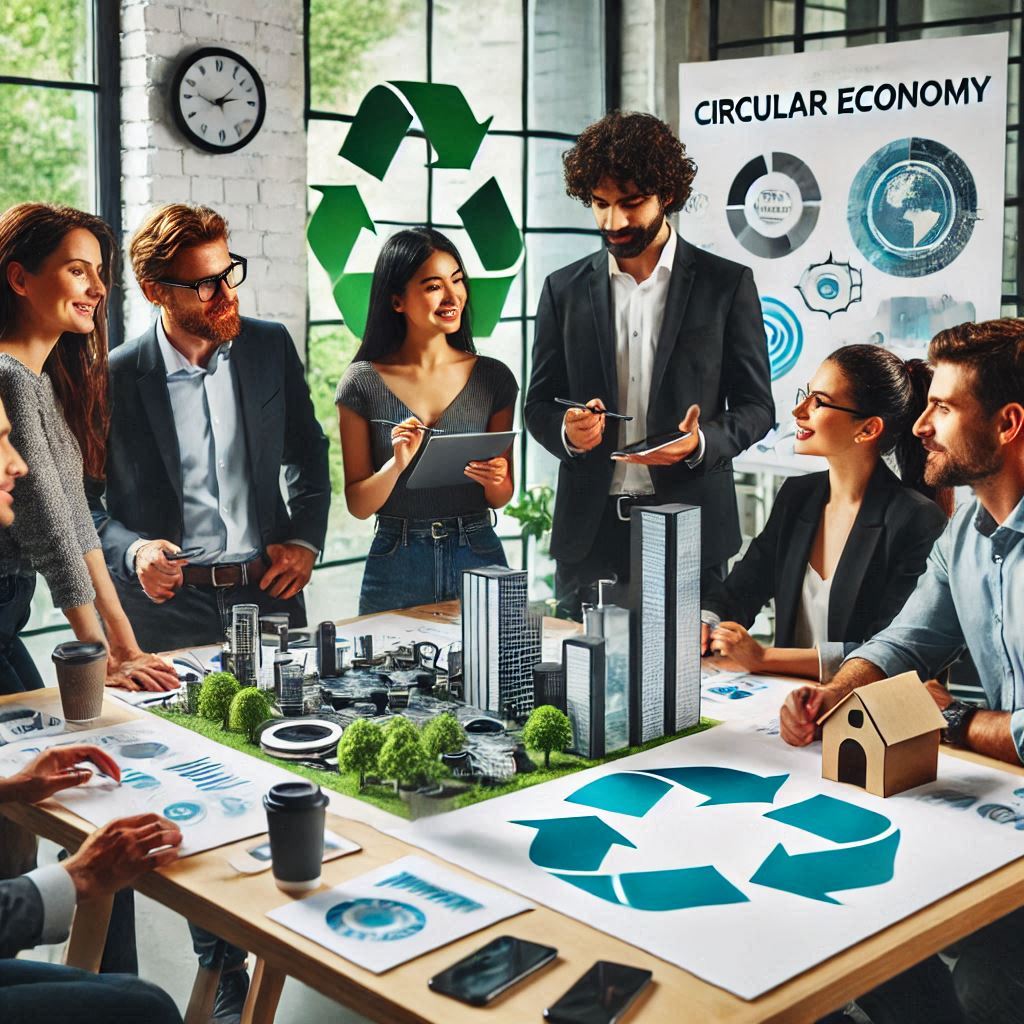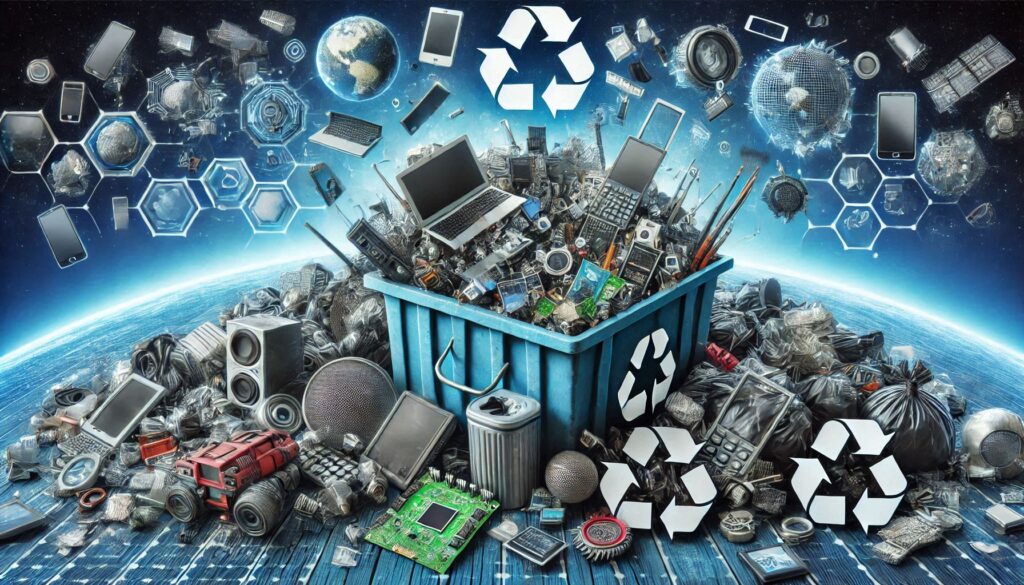E-Waste and Mobile Technology: Addressing the Growing Problem in 2025
E-Waste and Mobile Technology: Addressing the Growing Problem in 2025″
E-Waste Recycling 2025: Addressing the Growing Mobile Technology Crisis
E-Waste and Mobile Technology: Addressing the Growing Problem in 2025″: In 2025, the world faces an escalating environmental challenge: the e-waste crisis. Among the various contributors to this growing issue, mobile technology is a primary factor. The rapid turnover of mobile devices, fueled by consumer demand for the latest features and innovations, has created an unsustainable cycle of production, consumption, and disposal. This article explores the environmental impact of discarded mobile devices, how to recycle old smartphones responsibly, and the strides being made toward sustainable mobile technology manufacturing in 2025.
Understanding the Scope of Mobile E-Waste – E-Waste and Mobile Technology
Defining E-Waste
E-waste, or electronic waste, refers to discarded electronic devices, including smartphones, tablets, laptops, and more. Mobile e-waste specifically refers to discarded mobile devices, such as phones and accessories. With over 50 million metric tons of e-waste generated annually, mobile devices are a significant contributor to this alarming trend.
Environmental Impact – E-Waste and Mobile Technology
The environmental toll of e-waste is severe and includes the following issues:
- Toxic Substances: Mobile phones contain hazardous materials like lead, mercury, and cadmium, which, when improperly disposed of, can leak into the environment, harming soil and water.
- Resource Depletion: Smartphones are made from rare earth metals, such as cobalt, lithium, and gold. The extraction of these materials not only depletes finite resources but also causes environmental damage.
- Energy Consumption: Manufacturing mobile devices requires vast energy resources, leading to increased carbon emissions and global warming.
The Lifecycle of a Smartphone – E-Waste and Mobile Technology
Production Phase
The production of smartphones involves substantial resource extraction, requiring metals, plastics, and glass. For example, producing a single smartphone uses over 70 kg of raw materials. This process can result in deforestation, water pollution, and destruction of natural habitats.
Usage Phase
While modern smartphones are more energy-efficient, their widespread use means the cumulative environmental impact over time cannot be ignored. These devices require regular charging and software updates, which can shorten their lifespan.
End-of-Life Phase
Many discarded smartphones end up in landfills or are incinerated. Despite recyclable components, less than 20% of global e-waste is properly recycled. Informal recycling practices, especially in developing countries, expose workers to toxic materials, posing severe health risks.
Innovative Recycling Programs in 2025 – E-Waste and Mobile Technology
The Need for Recycling Smartphones
Recycling is essential to reduce e-waste and recover valuable materials. Unfortunately, the recycling rate for mobile devices remains alarmingly low. This underscores the need for better recycling infrastructure and increased public awareness about best mobile phone recycling programs 2025.
Examples of Successful Programs
- Apple’s Recycling Initiatives: Apple has introduced the “Daisy” robot, which disassembles old iPhones for material recovery. The company also offers trade-in programs, encouraging users to return their old devices in exchange for credits on new purchases.
- Fairphone’s Circular Model: Fairphone, a leader in repairable smartphones for sustainable living, designs modular smartphones that are easy to repair and upgrade, thus extending device lifespan and reducing e-waste.
- Urban Mining Projects: Urban mining focuses on how urban mining helps reduce mobile e-waste by extracting valuable materials like gold and lithium from e-waste. Companies such as TES-AMM and Umicore are pioneering this technique.
Promoting Repairable Phones and the Right to Repair Movement – E-Waste and Mobile Technology
Barriers to Repairability
Modern smartphones are often difficult to repair due to design factors like glued components, proprietary screws, and limited access to replacement parts. These design choices contribute to mobile e-waste by discouraging repairability.
The Right to Repair Movement – E-Waste and Mobile Technology
The right-to-repair movement and mobile phones advocates for laws ensuring consumers and technicians have access to the tools and parts necessary to repair devices. In 2025, several countries are adopting such laws to reduce electronic waste.
Examples of Repairable Devices – E-Waste and Mobile Technology
Brands like Fairphone and Shiftphone embrace modular designs, showcasing how modular design extends smartphone lifespan. By prioritizing repairability and longevity, these brands are setting the standard for sustainable mobile technology.
Sustainable Manufacturing Practices in Mobile Technology – E-Waste and Mobile Technology

Eco-Friendly Materials
Manufacturers are exploring the use of sustainable materials like recycled plastics and bio-based polymers. These materials reduce the environmental footprint of production without compromising device quality.
Energy-Efficient Processes
Leading companies such as Samsung and Huawei are transitioning to energy-efficient manufacturing processes, using renewable energy to power production facilities, reducing carbon footprints.
Ethical Sourcing
Ensuring ethical sourcing of materials is vital in addressing the environmental and social impacts of mining. Initiatives like the Responsible Minerals Initiative (RMI) and Fairtrade certification are improving transparency in the supply chain.
- E-waste recycling 2025
- Mobile phone recycling programs
- Sustainable mobile technology
Advancing the Circular Economy for Smartphones – E-Waste and Mobile Technology
What is a Circular Economy?
A circular economy is one that reduces waste and promotes resource efficiency through reuse, repair, and recycling. In mobile technology, this means:
- Designing devices for longevity and ease of repair.
- Implementing take-back and recycling programs.
- Promoting the refurbishment and resale of used devices.
Benefits of a Circular Economy
Adopting a circular economy for mobile devices offers numerous benefits, including:
- Reduced demand for raw materials.
- Minimized environmental impact.
- New economic opportunities in recycling and refurbishment.
Companies leading the circular economy for smartphones are proving that collaboration among governments, businesses, and non-profits is essential for creating a sustainable mobile technology future.

Green Technology Trends in 2025 – E-Waste and Mobile Technology
Innovative Designs
The mobile industry is witnessing a surge in innovative designs aimed at sustainability. These include:
- Solar-Powered Phones: Devices that reduce dependence on electricity by integrating solar charging capabilities.
- Biodegradable Components: The use of materials that break down naturally at the end of their lifecycle.
- AI for Sustainability: Leveraging artificial intelligence to optimize resource use and predict maintenance.
Consumer Education
It’s vital to educate consumers about how to reduce mobile e-waste as a consumer. Public awareness campaigns should focus on topics like:
- Choosing sustainable smartphones in 2025.
- Best practices for disposing of electronic waste.
- Refurbished phones vs. new phones for sustainability.
- Why recycling old gadgets matters for the environment.
Conclusion – E-Waste and Mobile Technology
The e-waste crisis, driven by the rapid turnover of mobile devices, demands urgent action. By embracing sustainable manufacturing in mobile technology, promoting repairable designs, and advancing recycling initiatives, the mobile technology industry can lead the way toward a greener future. With the collective effort of consumers, businesses, and governments, the vision of a circular economy for mobile technology is attainable. Together, we can reduce electronic waste, conserve valuable resources, and protect the planet for generations to come.
- E-waste management
- Best mobile phone recycling programs
- Repairable smartphones
- Circular economy in mobile tech
- Sustainable smartphone manufacturing
- E-waste environmental impact
- Mobile technology sustainability
- Smartphone recycling tips
- Eco-friendly smartphone materials
- Recycling electronic waste
- Urban mining e-waste
- Best practices for e-waste disposal
- Mobile e-waste solutions
- Reducing e-waste in 2025
- Right to repair smartphones
- Circular economy mobile devices


